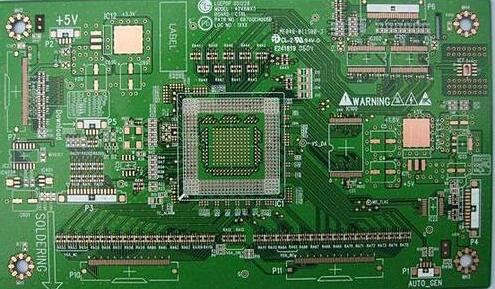How does smt factory appraise the quality of solder paste?
The smt PCB factory came to talk about the quality of solder paste, how should we appraise it? In the smt factory, the factors that affect the printing quality of SMT solder paste processing include viscosity, printability (rolling, transfer), thixotropy, and room temperature service life. Let's take a look at the details with the editor of the smt factory.
How does smt factory appraise the quality of solder paste?
The solder paste used in the PCB production and processing of SMT patches in the smt factory should be uniformly weighed, with good consistency, clear graphics, and adjacent graphics as far as possible without adhesion; graphics and pad graphics should be as good as possible; the amount of solder paste on the pad for each company's total area It is about 8mg/mm3, and the amount of finely spaced components is about 0.5mg/mm3. The solder paste should cover more than 75% of the total land area. The solder paste should be packaged and printed without serious concrete slump, the edges are neat, and the displacement should not exceed 0.2mm; the spacing of the protective layer of the prefabricated components should be fine, and the displacement should not exceed 0.1 mm; the base steel plate is not allowed to be polluted by the solder paste environment.
The factors that affect the printing quality of SMT solder paste processing in smt factories include viscosity, printability (rolling, transfer), thixotropy, and room temperature service life. The quality of the patch will affect the printing quality. If the printing performance of the solder paste is not good, in severe cases, the solder paste will only slide on the template. In this case, the solder paste cannot be printed at all.

The viscosity of the solder paste for SMT chip processing is an important factor affecting the printing performance. The viscosity is too high, the solder paste cannot easily pass through the opening of the template, and the printed lines are incomplete. If the viscosity is too small, it is easy to flow and collapse, which will affect the printing resolution and smoothness of lines. The viscosity of the solder paste in smt factory can be measured with an accurate viscometer, but in actual work, the following method can be used: stir the solder paste with a spatula for 8-10 minutes, then stir a small amount of solder paste with a spatula to let the solder paste fall naturally. If the solder paste decreases gradually, the viscosity will be moderate. If the solder paste does not slide at all, the viscosity is too high; if the solder paste slides down at a faster speed, it means that the solder paste is too thin and the viscosity is too small.
The viscosity of the solder paste for SMT chip processing is not enough, and the solder paste will not roll on the template during printing. The direct consequence is that the solder paste cannot completely fill the opening of the template, resulting in insufficient solder paste deposition. If the viscosity of the solder paste is too high, the solder paste will hang on the wall of the template hole and cannot be completely printed on the pad. The adhesive selection of solder paste in smt factory usually requires its self-adhesive ability to be greater than its adhesion to the template, and its adhesion to the template hole wall is less than its adhesion to the pad.
The shape, diameter and uniformity of the solder particles in the solder paste for SMT chip PCB processing also affect its printing performance. Generally, the diameter of the solder particles is about 1/5 of the size of the template opening. For pads with a pitch of 0.5 mm, the size of the template opening is 0.25 mm, and the larger diameter of the solder particles does not exceed 0.05 mm. Otherwise, the smt factory will easily cause blockage during the printing process. The specific relationship between the lead pitch and solder particles is shown in Table 3-2. Generally speaking, fine-grain solder paste will have better printing clarity, but it is prone to edge collapse and has a high chance of oxidation. Generally, considering performance and price, the lead pitch is regarded as one of the important selection factors.
How smt factory appraises the quality of solder paste, smt factory will introduce to all friends here. If you have any technical questions, we can discuss them together, thank you.